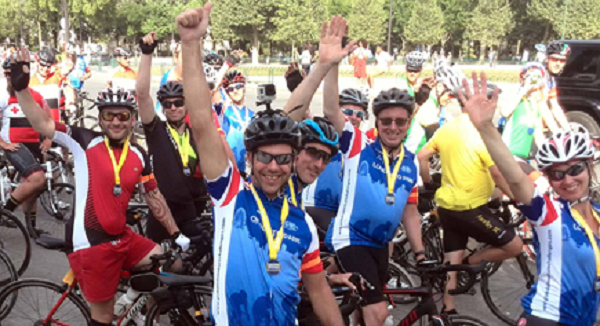When it comes to charity challenges, few are more popular than a long bike ride through a foreign country. In support of your charity of choice, you’ll cross a distance that could total hundreds of kilometres in a matter of weeks. In order to get to the finish line in one piece – and preferably, with an ease that will embarrass your fellow riders, you’ll need to put the hours in training.
Fortunately, this time spent training will come with a positive side effect: it’ll build your general health and fitness levels, thereby ensuring that you look and feel great. But in order to get the best from the hours we spend in the saddle, it’s important to spend a few minutes considering the methods we might use. Let’s consider how we might approach the task.
Have a long-term goal in mind
If you’re going to be training, it’s important to have a sense of purpose. For this reason, the most effective trainers in any activity are those who have a long-term goal to work towards. This goal might be wholly artificial, like losing a given amount of weight in a given time frame, or it might be a real-world task that you’re building towards.
Charity bike rides have the virtue of providing you with a long-term objective: you’ll need to be ready to conquer the route in question when the day you finally get started arrives. For this reason, it’s important to book your trip well in advance – that way you’ll have an incentive to saddle up every day!
Break the goal down into manageable chunks
Once you’ve established what it is that you’re building towards, you’ll want to break the task down into small chunks. So, if you intend to be able to cycle eight miles straight after eight weeks, then building up your endurance, adding a mile a week, might seem a sensible way to proceed. Of course, in the real world we don’t progress in this linear fashion – which is why it’s important to keep track of your progress.
Track your progress
As you go along, it’s essential to keep a log of how well you’re doing. The more data you have access to, the more informed your changes to your routine will be. Of course, some measurements are more easily obtained than others – you might be able to log how many miles you’re doing, but keeping track of more subjective areas, like the quality of your pedalling technique, might require a trainer.
Ideally, you’ll want to equip yourself with a heart-rate monitor, which will keep track of the bpm of your heart. You’ll want to keep this high during your exercise, but ideally it should sink when you’re resting – as your heart will be able to provide more blood in less time, since it’s more powerful.
Intervals are key
It’s now firmly established wisdom among fitness experts that interval training will lead to more substantial gains in a shorter timespan than other forms of training. Interval training works by interspersing short bursts of high activity with longer stretches of near-rest. So, if you’re looking to cycle 10km in a day, you’d alternate each alternate kilometre – doing one at near jogging speed, and another at maximum effort.
But endurance is important, too
On the other hand, it’s important to acclimatise yourself to the riding technique you’ll be using during the event itself. This means building endurance is key – and so you’ll need to also engage in long, steadily-paced exercise, too. This sort of training needn’t be boring – it’s an opportunity to focus on things like maintaining your pace, and breathing effectively.
Vary your surroundings
Training, if done improperly, can be a very boring thing. You are, after all, simply performing the same action again and again – to the point where your brain and body become accustomed to it. And when we’re too accustomed to something, it becomes tedious. By varying your surroundings – going on longer rides through different locales, you’ll be able to vary the stimulus. This will not only make your training more engaging, but it’ll make it more fun, too.
Don’t neglect cross-training
For much the same reason, it’s beneficial to occasionally do some other form of physical activity. Cross-training will help to mix things up, and ensure that you don’t injure yourself by focussing excessively on the same narrow range of motion. For this reason, it can be beneficial to occasionally join a gym, and supplement your real cycling training with a few hours on the stationary bike.

